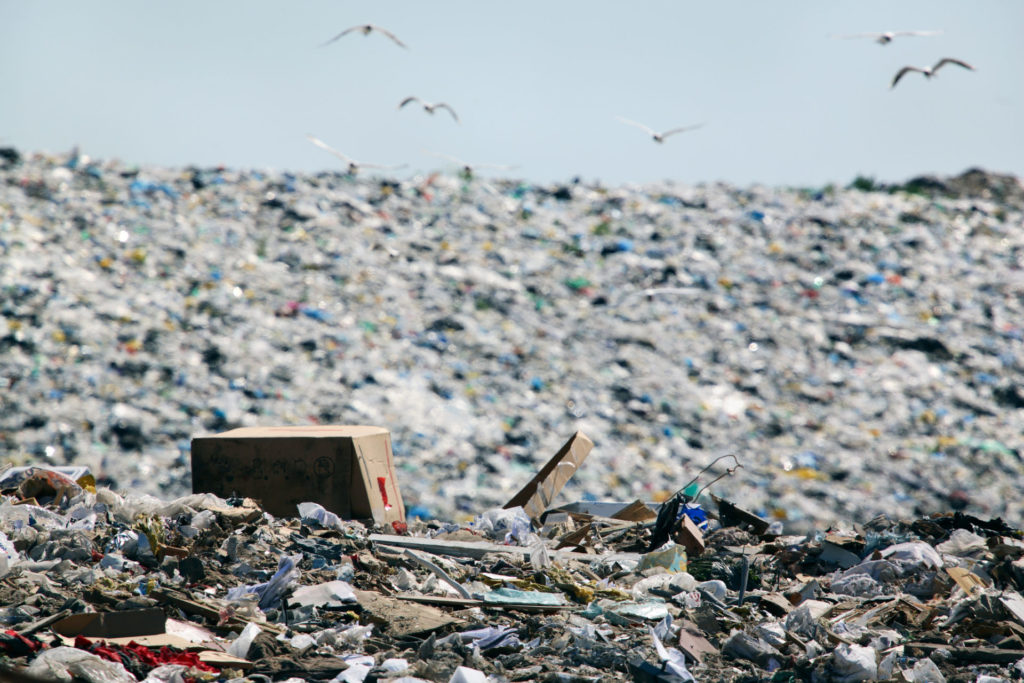Focusing on methane and natural processes to reduce greenhouse gas concentrations
In my first blog post of this series, I had noted that we need to do more than eliminate greenhouse gas emissions to keep the temperature lid at 1.5°C. This is because decarbonizing energy will unmask the cooling effect of some pollutants now emitted by burning fossil fuels; that cooling effect (netted over several pollutants) amounts to about 0.4°C, according to the IPCC (IPCC 2021, p. 9). We are at 1.1°C warming now; without the cooling mask, the average temperature global rise would already be 1.5°C. The math is simple: besides phasing out fossil fuel burning, we need to reduce concentrations of some climate pollutants significantly – that means removing from the atmosphere some of what has already accumulated from past emissions. I have also argued (in the same blog) that carbon capture and sequestration is a poor approach for doing that. So now what?
The answer? It is essential to focus on short-lived climate pollutants. They include (i) methane, the main component of fossil gas and the most important one; (ii) chlorinated and fluorinated refrigerants and foam-blowing agents, called HCFCs and HFCs; (iii) soot, technically known as “black carbon,” which absorbs sunlight; and (iv) tropospheric ozone, O3, that is, ozone in the air we breathe, created by the action of sunlight on a variety of pollutants, such as volatile organic compounds, nitrogen oxides, and, yes, methane. When it is in the stratosphere, the very same molecule, O3, absorbs ultra-violet radiation, protecting ecosystems (and us). In the air we breathe it is a lung irritant and can aggravate asthma, among other problems, according to the EPA.
In contrast to CO2, which persists for hundreds of years once it is in the atmosphere, short-lived climate pollutants are destroyed by chemical reactions. This means that if we stop emissions, accumulated inventory of man-made short-lived climate pollutants will be cleaned out of the atmosphere in months, a few years, or a few decades (depending on the pollutant); at that point they would no longer exert their warming influence. That will give humanity almost half-a-degree Celsius of breathing room. The money now being lavished on carbon capture and sequestration would be far better spent on the eliminating the anthropogenic emissions of short-lived climate pollutants as rapidly as possible and on stimulating the natural processes that clean them out of the atmosphere.
The target should be to return the concentrations of these short-lived climate pollutants to their pre-industrial levels – zero for man-made chemicals like HFCs, and about 730 parts per billion for methane. There are three complementary ways to do this, with the first being essential:
- Stopping anthropogenic emissions;
- Restoring natural processes that destroy pollutants that have been disrupted by human activities;
- Artificially stimulating removal processes of short-lived climate pollutants.
Methane is the most important short-lived climate pollutant – its accumulated warming impact is about 60 percent of that of CO2 (IPCC 2021, Figure SPM.2, p. 9). The concentration of methane has greatly increased in the industrial age from about 730 parts per billion in 1750 to 1,866 ppb in 2019. The human sources of methane emissions in the United States, in order of importance, according to EPA data, are:
- Enteric fermentation in ruminants;
- Leaks from natural gas production, transport, and distribution, and within homes, businesses and industries where natural gas is used;
- Landfills, where organic waste decomposes; some of it becomes methane.
- “Manure management” – that is emissions from manure, largely from Concentrated Animal Feeding Operations (such as CAFOs for cattle and hogs).
- Coal mines.
- Oil production;
- Wastewater treatment; and
- Rice cultivation, mainly from flooded fields.
The first three are by far the largest sources, adding up to about two-thirds of the total U.S. methane emissions, as estimated by the EPA. If the fourth, manure management is added, as it should be, the top four account for more than three-fourths of methane emissions in the United States. Methane emissions from CAFOs have been rising rapidly – by 71 percent since 1990, according to the Environmental and Energy Study Institute.

Methane emissions due to food production is a complex matter to which solutions like moving away from CAFOs for meat and dairy production and changes in diet have been suggested; other than one note below, I will save more detail on such matters for another day.
Independent estimates of methane emissions from fossil gas production are much higher than those made by the EPA. For instance, Alvarez et al. (Science, 2018) estimate U.S. emissions in 2015 at 13 million metric tons, compared to 8.1 million by the EPA. That would put fossil gas as the number one U.S. source of methane emissions. Evaluated for the warming impact over 20 years, 13 million metric tons of methane emissions are equivalent to burning five hundred million tons of coal.
Methane pollution also aggravates the climate impact of many other pollutants by slowing down the natural processes of their removal. Methane, like many other gaseous pollutants, is removed from the atmosphere mainly by chemical processes. The most important atmospheric chemical cleanser is the hydroxyl radical, OH, which is water, H2O, minus one of the hydrogen atoms. It is produced naturally as well as by interactions among a variety of pollutants. It is consumed when it destroys pollutants via chemical reactions; it does so rapidly.
The mounting atmospheric methane concentration reduces the number of hydroxyl radicals available to clean out other warming pollutants, such as refrigerants like HFCs and HCFCs. In turn that means their concentrations increase even if their emissions do not increase – each molecule just sticks around longer in the atmosphere; it is like the drain is partly stopped up. Correspondingly, their warming impact also increases. Overall, the direct warming impact of methane is about 0.54 watts per square meter; the total direct and indirect impact is more than twice that, at 1.21 watts per meter (IPCC 2021, p 6-47).
Methane has a half-life in the atmosphere of about nine years. That means that if methane emissions from fossil gas are stopped, 90 percent of the accumulated inventory due to fossil gas production and use would be dissipated in about 30 years, eliminating the corresponding warming impact. The impact of the many decades of fossil gas use would be gone in 30 years – a kind of absolution that Mother Nature will give human society, if we pay attention to the important natural processes that keep the atmosphere in balance. This also points up the importance of reducing or eliminating methane emissions from other sources, such as CAFOs.
Another advantage of focusing on rapid phase-out of fossil gas is that eliminating its use in homes will reduce indoor air pollution, with the attendant health benefits.
There are other ways to address methane pollution as well. Bacteria known as methanotrophs live in the soil and in aquatic environments; methane is their food. Maintaining the health of the natural processes in which methanotrophs can thrive can help check the buildup of methane. For instance, the application of ammonium fertilizers and certain pesticides reduces the capacity of methanotrophic bacteria to eat methane (Hanson and Hanson 1996, p. 456). This means certain healthier agricultural practices could also help reduce methane concentrations. Stimulation of methanotrophs in landfills would accomplish the same thing.

Faster phase-out of HFCs would also help. For example, HFC-152a, a refrigerant used in car air-conditioners, has a half-life of about one year; it would be cleaned out of the atmosphere within a few years of emissions stopping. Other refrigerants, like HFC-134a are similar in persistence to methane. In such cases, about 90 percent of the accumulated inventory would be cleaned out of the atmosphere in 30 years. Finally, reducing soot – black carbon pollution – should be a much higher priority than it is. When soot deposits on Arctic Ocean ice or on glaciers, more sunlight is absorbed, causing faster melting. Diesel emissions and cooking with wood, charcoal, and cow dung are major sources as are forest fires.
Reducing emissions of some non-greenhouse-gas pollutants can also accelerate the removal of short-lived climate pollutants. For instance, volatile organic compounds (VOCs), like unburned hydrocarbons from vehicular and lawn mower exhaust and emissions of gasoline vapors at gas stations, consume hydroxyl radicals. Reducing their emissions would accelerate the destruction of short-lived climate pollutants like methane; it would also reduce the production of tropospheric ozone, a lung irritant that also has a warming impact. A comprehensive program of eliminating non-methane volatile organic pollutants, accelerating the phase-out of fossil gas, and replacing HFCs with non-warming, or low-warming refrigerants are key approaches that harness natural forces to boost human efforts in reducing greenhouse gas and other pollution. Stimulating methanotrophs and reducing emissions of soot would complement those efforts.
It is also possible, in theory, to artificially produce hydroxyl radicals on a large scale. But, like other methods that interfere with natural processes in significant ways, understanding the impacts is a complex problem. We cannot make the same mistake as advocates of carbon capture and sequestration are making; a careful assessment is needed. Several efforts to explore the hydroxyl radical option on a small scale are underway; this would enable an understanding of the impact and feasibility of large-scale production. More funds for small-scale and laboratory research would help.
There is now global agreement that an urgent focus on short-lived climate pollutants is needed. The “Global Methane Pledge” to reduce methane emissions by 30 percent by 2030 was launched by the United States and the European Union in 2021. By the end of the global climate conference in Egypt in November 2022 (aka “COP27”), 150 countries had signed the pledge. It is a start, IF the signatories abide by it. Much more effort is needed.
